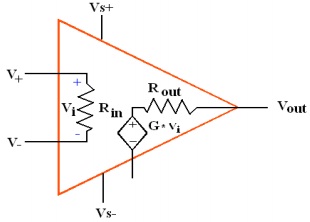To design and study Differentiator using Op-amp 741.
Introduction
The basic Op-amp Differentiator circuit is the exact opposite to that of the Integrator operational amplifier circuit. Here, the position of the capacitor and resistor have been reversed and now the reactance, Xc is connected to the input terminal of the inverting amplifier while the resistor, Rƒ forms the negative feedback element across the operational amplifier as normal.
This circuit performs the mathematical operation of Differentiation that is it "produces a voltage output which is directly proportional to the input voltage's rate-of-change with respect to time". In other words the faster orlarger the change to the input voltage signal, the greater the input current, the greater will be the output voltage change in response, becoming more of a "spike" in shape.
An operational Amplifier, often called an Op-amp, is a DC-coupled high-gain electronic voltage amplifier with differential inputs ad usually a single output. Typically the output of the Op-amp is controlled either by negative feedback, which largely determines the magnitude of its output Voltage gain, or by positive feedback, which facilitates regenerative gain and oscillation. High input impedance at the input terminals and low output impedance are important typical characteristics.
Ideal Op-amp: The figure below shows an example of an ideal operational amplifier. The main part in an amplifier is the dependent voltage source that increases in relation to the voltage drop across Rin, thus amplifying the voltage difference between V + and V -. Many uses have been found for Op-amp and an ideal Op-amp seeks to characterize the physical phenomena that make Op-amps useful.
 |







